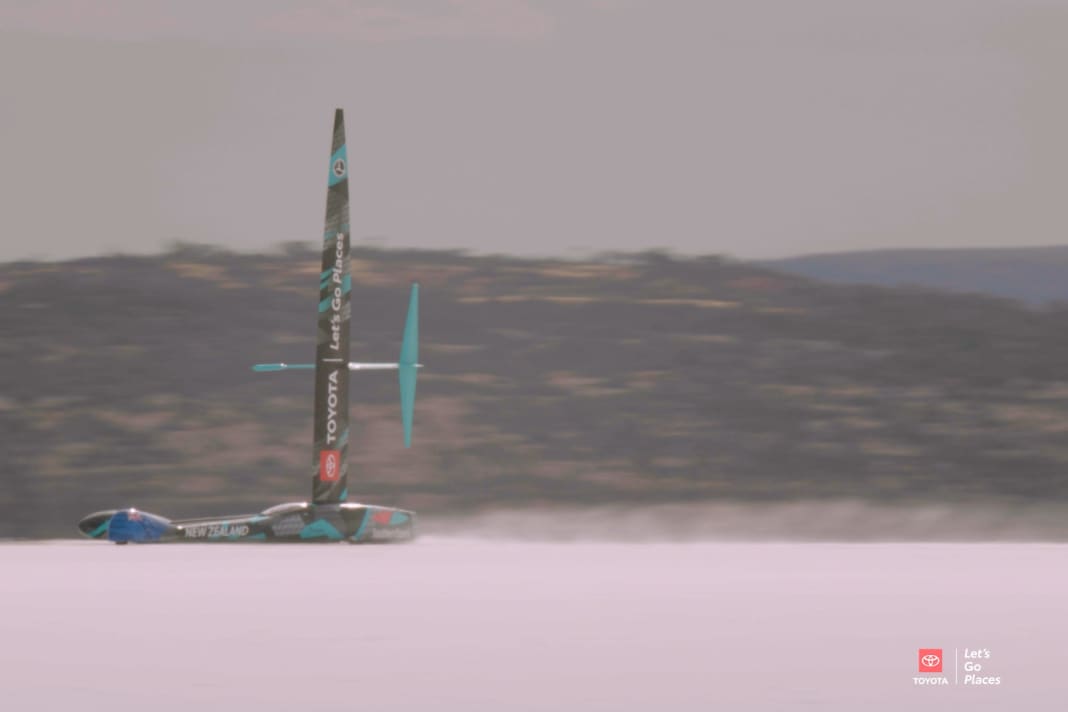Project Landspeed: Another new world record by Team New Zealand - 225.58 km/h!






It was only in December that "Horonuku" reached an incredible speed of 222.4 km/h on the dry Australian salt lake Lake Gairdner, pulverising the old record of just under 203 km/h. "We came back to the lake in February to pack up the boat," says pilot Glenn Ashby. "We had to bring 'Horonuku' and the containers back to New Zealand. But after a few days, our meteorologist indicated that the weather might be good, so we hurried up and went back out on the lake." The team wasn't sure if the conditions would be good, so they kept a low profile, Ashby continued.
As with the last world record run in December, the required wind speed was only expected to last a few hours, so the team had to be ready for take-off. On the evening of 24 February 2023, Ashby drove "Horonuku" into the record books once again with 225.58 km/h. "Two days before packing up, we actually set a new benchmark for the fastest wind-powered vehicle in the world, beating our own previous record by over 3 km/h," says the delighted pilot.
Landspeed project not yet at an end
Since the last America's Cup the New Zealand team has been working on this special project off the water. Breaking the world record was only a sub-goal, but one that they were determined to achieve. "The Landspeed project was a new opportunity to push the boundaries of aerodynamics, structural forces, construction methods and materials," says Matteo de Nora, head of Emirates Team New Zealand. This is to be continued and pushed even further: "We know that we can go even faster, so that's what we intend to do."
Even pilot Glenn Ashby doesn't see the new record as the end of the possibilities. When asked whether "Horonuku" could go even faster, Ashby quickly replies in the affirmative: "Absolutely! We have no doubt that we can go much faster, you always want to go faster. But I think you have to take stock at some point and be impressed with our speeds. We've pushed some pretty high limits with this project!"
Team New Zealand wants to be ahead of the times
"What is often underestimated is that the technologies we use in challenges like this - or in a America's Cup -campaign - are ultimately the basis for the technology of tomorrow," emphasises de Nora, referring to the other projects. Being ahead of the times technologically is the fascinating thing about all the challenges the team has faced so far. Among other things, it was the reigning America's Cup winner who launched the first prototype for the next Cup in 2024. The New Zealand team's development also serves as a yacht for all participants in the Youth America's Cup and the Women's America's Cup.
